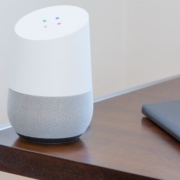The coming year almost certainly has some surprises in store for the technology space, but one factor IT professionals can bank on is that digital transformation will remain a top goal for enterprises. Digital transformation provides a solid advantage by facilitating operational excellence; it enables service or product innovation, and it increases customer value over time. That’s why enabling digital transformation is among CIOs’ top three objectives in 11 out of 15 industries, according to Gartner’s 2018 CIO Agenda Industry Insights report.
Both the agent and currency of every digital transformation initiative is data. IT professionals seeking to help their companies pursue digital business models in the coming year must be ready to quickly integrate an ever-increasing number of endpoints and applications required by business leaders. They must also be ready to manage and deploy digital assets and data from new data sources, a majority of which will be cloud-based, and do so at the speed of innovation. For IT leaders, the challenge will be to develop an IT strategy and architecture that can support the integration and data management needs of digital transformation.







